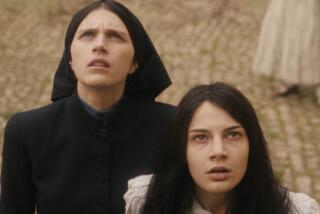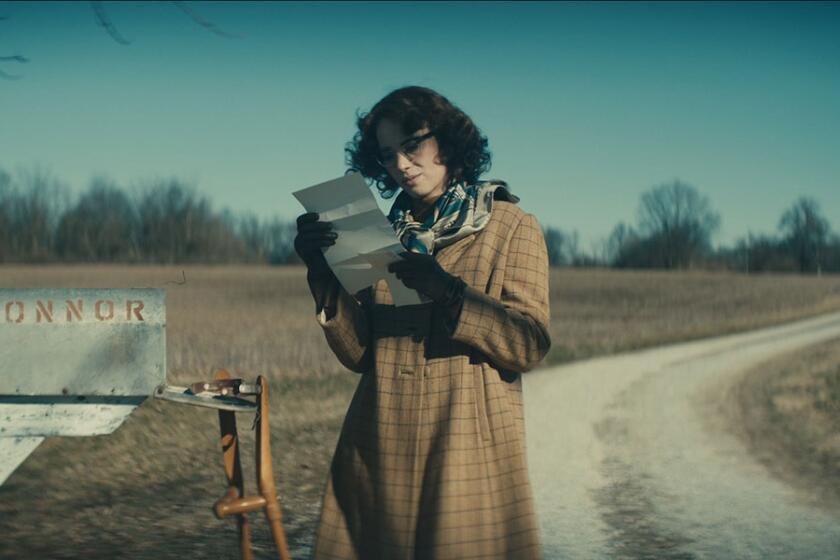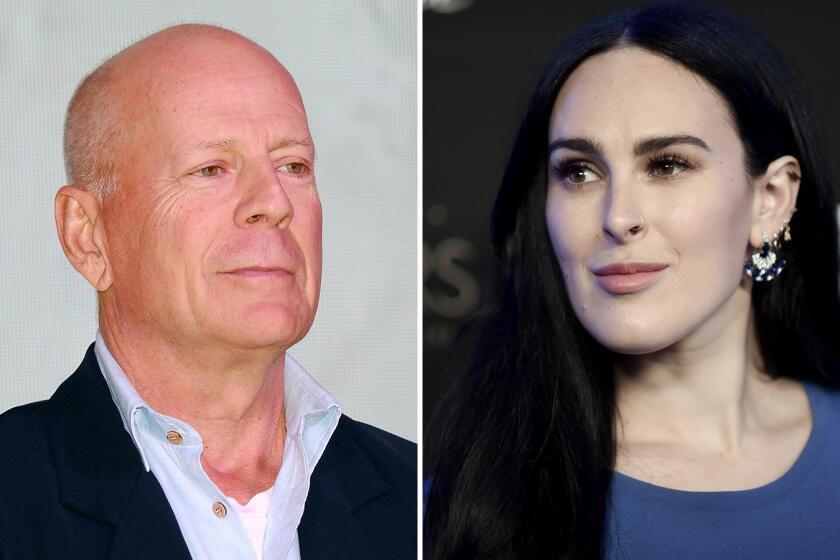Review: Orson Welles raises a glass to Falstaff in the spectacular ‘Chimes at Midnight’
As a director, Orson Welles is best known for the epochal “Citizen Kane” and the irresistible “Touch of Evil.” But to many Wellsians, and to the man himself, there is a third film that ranks with those two, a film that has been unavailable in this country for decades.
That would be “Chimes at Midnight,” and that situation is about to change.
Also known as “Falstaff,” this 1965 epic is Welles’ virtuoso tribute to that largest of Shakespearean characters. Freed at last from rights disputes that made it accessible in Europe but not here, “Chimes” opens Friday for a one-week run at the Cinefamily on Fairfax Avenue.
See more of Entertainment’s top stories on Facebook >>
To see it now in the kind of fine digital restoration it deserves is to understand what Welles meant when he told the BBC in 1982, “If I wanted to get into heaven on the basis of one movie, that’s the one I would offer up.”
A meditation on aging, friendship, betrayal and coming to terms with life’s profound contradictions, interspersed with antic humor and some of the greatest battle scenes ever filmed, “Chimes at Midnight” can’t escape the air of majestic melancholy that begins with the opening scene, a wintery conversation between Welles’ Sir John Falstaff and his old friend Master Shallow (Alan Webb) that gives the film its name: “We have heard the chimes at midnight, Master Robert Shallow,” Falstaff says, to which the venerable man replies, “That we have, that we have, that we have.”
That exchange, though it is said in a different physical context, comes from “Henry IV, Part II,” one of several Shakespearean plays (the others include “Henry IV, Part I,” “Henry V,” “Richard II” and “The Merry Wives of Windsor”) that Welles mined for situations and lines of dialogue involving the inescapably roguish Sir John, a character so intoxicating that the director considered him to be “Shakespeare’s greatest creation.”
Though it could be supposed that Welles took on the film because few roles were available for a man of his size, in truth, he had been fascinated by Falstaff for most of his life. He played the character while a student at the Todd School as well as in a 1938 Mercury Theater multi-play pastiche called “Five Kings” that was revamped into a 1960 stage version also called “Chimes at Midnight.”
But though Sir John in a sense stands alone due to his comic energy and his girth (“How long is it, Jack,” someone asks in all seriousness, “since thou has seen thy knees?”), it is Welles’ inspiration to play him off against a strong opponent as “Chimes’ ” plot goes back and forth between the rascals and the royals.
The key royal, and Falstaff’s spiritual adversary, is not the ultimately treacherous Prince Hal (Keith Baxter) but his father, the usurping monarch Henry IV, brilliantly played by John Gielgud.
Though his time on set was apparently limited to 10 days (some reports say that all the actor’s over-the-shoulder shots were done with a double), Gielgud defines magisterial as the icy monarch all too aware of the precariousness of his situation.
One of the virtues of “Chimes” is that Welles’ lifelong familiarity with Shakespeare meant that he treated the language as something alive and vital, spoken by real people. The spectacular Gielgud is his best ally here, and hearing him speak celebrated lines like “can no man tell me of my unthrifty son” and “uneasy lies the head that wears a crown” is to have them come alive as if no one had ever spoken them before.
SIGN UP for the free Classic Hollywood newsletter >>
It’s well that Gielgud’s work is so vivid, because Welles’ Falstaff is overpoweringly good. A born rogue and lover of drink, Sir John in Welles’ view is less a liar than a Baron Munchausen-type fabulist, someone who considers life to be a performance and reality a mere construct he can alter according to his whim. His life force is so irresistible that by the time Falstaff pleads to the prince, play-acting as his own father, “banish not him thy Harry’s company, banish plump Jack and banish all the world,” we have no choice but to agree.
It is Prince Hal who provides the link between these two exemplars, and he initially prefers Sir John to his father because the large man is an alluring source of merriment. But when rebels against the king’s rule force Prince Hal to take arms along with his father at Shrewsbury, his loyalty starts to look homeward. Those battle scenes, again shot with restrictions — Welles only once had as many as 180 extras, otherwise considerably fewer — are marvels of imagery and rhythmic editing. A frenzy of smoke, horses and murderous men all but immobilized by ever-present mud, these beautifully photographed sequences give an almost unparalleled sense of war’s savage brutality.
After the battle was won, it was only a matter of time until Prince Hal abandoned Falstaff once he became king. What is apparent is that Falstaff had come to believe his own fantasies, had convinced himself that he had a relationship with those in power. So, in his own way, did Orson Welles, and that belief was perhaps a factor in his undoing in the same way Falstaff’s was in his.
Note: A version of this piece was published in Turan’s book “Not to Be Missed: Fifty-Four Favorites From a Lifetime of Film.”
------------
‘Chimes at Midnight’
No MPAA rating
Running time: 1 hour, 56 minutes
Playing: Cinefamily, Los Angeles
More to Read
Only good movies
Get the Indie Focus newsletter, Mark Olsen's weekly guide to the world of cinema.
You may occasionally receive promotional content from the Los Angeles Times.






